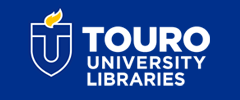NYMC Faculty Publications
Real-World Outcomes of Endovascular Thrombectomy for Basilar Artery Occlusion: Results of the Baronis Study
Author Type(s)
Student, Faculty
DOI
10.1002/ana.26640
Journal Title
Annals of Neurology
First Page
55
Last Page
60
Document Type
Article
Publication Date
7-1-2023
Department
Neurology
Second Department
Neurosurgery
Disciplines
Medicine and Health Sciences
Abstract
OBJECTIVE: To evaluate clinical outcomes of endovascular thrombectomy (EVT) for acute basilar artery occlusion (BAO) using population-level data from the United States. METHODS: Weighted discharge data from the National Inpatient Sample were queried to identify adult patients with acute BAO during the period of 2015 to 2019 treated with EVT or medical management only. Complex samples statistical methods and propensity-score adjustment using inverse probability of treatment weighting (IPTW) were performed to assess clinical endpoints. RESULTS: Among 3,950 BAO patients identified, 1,425 (36.1%) were treated with EVT [mean age 66.7 years, median National Institute of Health Stroke Scale (NIHSS) score 22]. On unadjusted analysis, 155 (10.9%) EVT patients achieved favorable functional outcomes (discharge disposition to home without services), while 515 (36.1%) experienced in-hospital mortality, and 20 (1.4%) developed symptomatic intracranial hemorrhage (sICH). Following propensity-score adjustment by IPTW accounting for age, stroke severity, and comorbidity burden, EVT was independently associated with favorable functional outcome [adjusted odds ratio (aOR) 1.25, 95% confidence interval (CI) 1.07, 1.46; p = 0.004], but not with in-hospital mortality or sICH. In an IPTW-adjusted sub-group analysis of patients with NIHSS scores >20, EVT was associated with both favorable functional outcome (discharge disposition to home or to acute rehabilitation) (aOR 1.55, 95% CI 1.24, 1.94; p < 0.001) and decreased mortality (aOR 0.78, 95% CI 0.69, 0.89; p < 0.001), but not with sICH. INTERPRETATION: This retrospective population-based analysis using a large national registry provides real-world evidence of a potential benefit of EVT in acute BAO patients. ANN NEUROL 2023;94:55-60.
Recommended Citation
Dicpinigaitis, A. J., Dick-Godfrey, R., Gellerson, O., Shapiro, S. D., Kamal, H., Ghozy, S., Kaur, G., Desai, S. M., Ortega-Gutierrez, S., Yaghi, S., Altschul, D. J., Jadhav, A. P., Hassan, A. E., Nguyen, T. N., Brook, A. L., Mayer, S. A., Jovin, T. G., Nogueira, R. G., Gandhi, C. D., & Al-Mufti, F. (2023). Real-World Outcomes of Endovascular Thrombectomy for Basilar Artery Occlusion: Results of the Baronis Study. Annals of Neurology, 94 (1), 55-60. https://doi.org/10.1002/ana.26640

- Citations
- Citation Indexes: 16
- Usage
- Abstract Views: 17
- Captures
- Readers: 11
- Mentions
- News Mentions: 1


